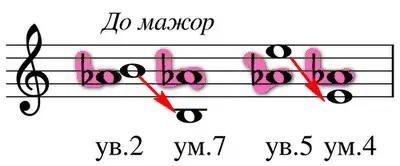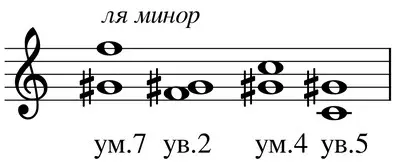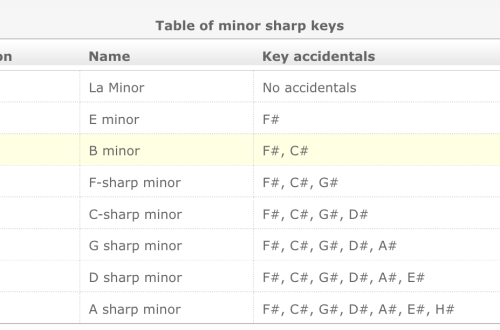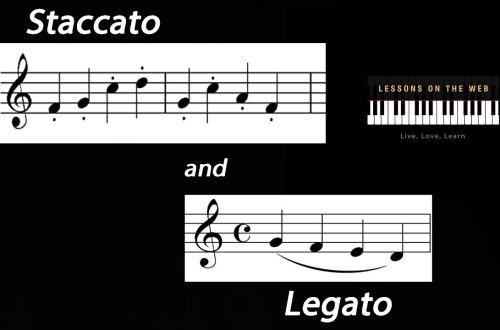
Characteristic intervals of harmonic major and harmonic minor
Characteristic intervals only appear in harmonic major and harmonic minor.
There are only four characteristic intervals, these are two pairs of interconnected increased and decreased intervals:
- augmented second and diminished seventh (uv. 2 and mind.7);
- augmented fifth and diminished fourth (uv.5 and um.4).
As part of each of the characteristic intervals there must be a characteristic step, that is, a step that changes due to the fact that the mode becomes harmonic. For major, this is the sixth lower step, and for minor, this step is the seventh increased. The characteristic step is either the lower sound of the characteristic interval or the upper one.
In general, stages VI, VII, and III take part in the formation of characteristic intervals.
When looking for characteristic intervals in a key, take note of the following:
- In the harmonic major, the increased characteristic (sw.2 and sv.5) are built on the lowered VI, and you can find their partners (d.7 and w.4) simply by inverting;
- In the harmonic minor, it is easier to find diminished characteristic ones (min.7 and min.4), they are built on the VII raised step, their partners (sw.2 and w.5) are obtained by the inversion method.


The steps on which all characteristic intervals are built are easy to remember. For convenience, you can use the following table:
| INTERVALS | MAJOR | MINOR |
| uv.2 | VI reduced | VI |
| mind. 7 | VII | VII increased |
| uv.5 | VI reduced | III |
| mind. 4 | III | VII increased |
The characteristic intervals are unstable, so they must be resolved. Permission is carried out according to the same principles that were applied to tritons:
- 1) upon resolution, unstable sounds should turn into stable ones (that is, into the sounds of a tonic triad);
- 2) reduced intervals decrease (narrow), enlarged intervals increase (expand).
The result of resolution of characteristic intervals is always stable:
- uv.2 is allowed in part 4
- mind.7 is allowed in part 5
- sw.5 is allowed in b.6
- um.4 is allowed in m.3
A feature of the resolution of SW.5 and SW.4 is one-way resolution: step III is included in these intervals, and when it is resolved, it simply remains in place, since it is stable (that is, it does not require permission).
An example of resolving characteristic intervals in the key of C major:






